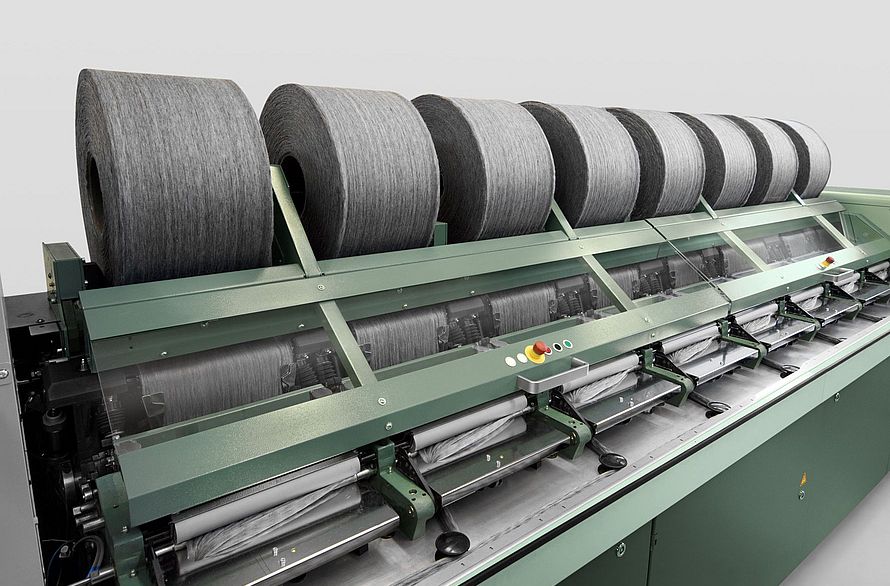Combing Recycled Cotton Blends

Due to its potential to reduce short fiber content and neps, the combing process is of great interest for recycled cotton blends. A new Rieter technology report shows how the comber effectively contributes to the production of premium-quality recycled ring and compact yarns.
Since the publication of the textile technology report “The Increasing Importance of Recycling in the Staple-Fiber Spinning Process” , interest in using recycled fibers for textile production has continued to grow significantly.
While the chemical recycling industry – with its promise of virgin-like fiber quality – is currently scaling up its production capacities, mechanically recycled fibers, mainly from post-industrial sources, are already widely available to the spinning industry.
In terms of spinning technology, rotor spinning remains the dominant method. At the same time, more and more companies are working to expand the application range of recycled fibers to ring and compact spinning. Blending recycled fibers with cotton or polyester (PES) remains a popular choice, while man-made cellulosic fibers (MMCF) are gaining increasing attention.
This new technology report, entitled “Enhancing Recycled Ring Yarn Quality: Unlocking the Potential of Recycled Cotton Blends with the Combed Process”, presents an innovative approach: spinning ring and compact yarns from blends of mechanically recycled and virgin cotton – a promising step towards sustainable and high-quality yarn production.